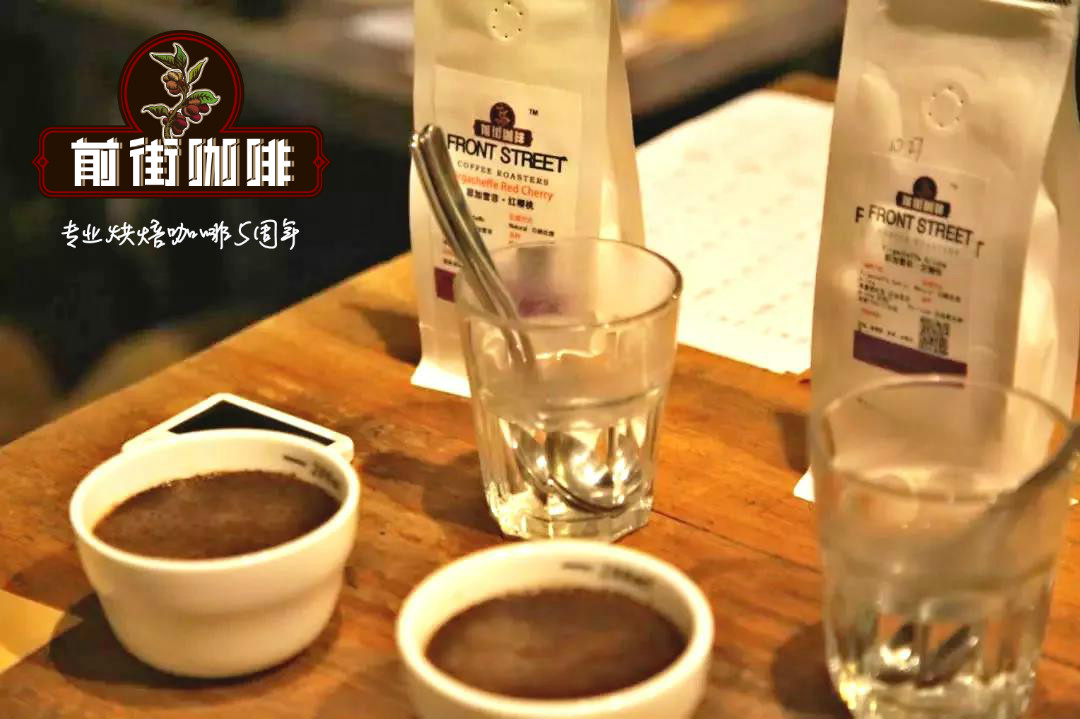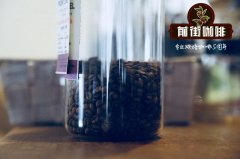What are the ancient ways of processing Yemeni coffee? What is the flavor of Yemeni coffee?

Professional coffee knowledge exchange more coffee bean information please follow the coffee workshop (Wechat official account cafe_style)
Yemen Mocha Mattari
Yemeni Moka Matali
Yemen Mocha Mattari Yemeni Moka
Country countries: Yemen Yemen
Region Origin:: Matali Mattari
Altitude altitude: 1300-1900m
Varietal varieties: Typica, Bourbon tin pickup, bourbon
Process treatment: Natural / Sundried sun treatment
| 01 | production area profile |
* History of Yemeni coffee *
Yemen is famous for its frankincense or spice trade and is the first place of origin in the world to grow coffee mochas.
If you follow before, this is also the place where Noah built the ark in the Bible.
Legend has it that the legendary queen, the territory of Sheba, who went to Jerusalem with gold, spices and large envoys 3000 years ago to find King Solomon and gave birth to a son. (it is rumored that this son is the first king of Ethiopia.)
In any case, perhaps because of the history since ancient times, it is said that the people in this land still have high self-esteem and are extremely independent.
Yemen, which retained its way of life thousands of years ago, is said to be out of reach of the central government in many places. Ethiopia, across the sea from Yemen, also sells coffee through the port of Mocha, so Ethiopian sun-treated coffee is often referred to as mocha (such as Harald ETHIOPIA Harra Mokka, Ethiopia). Yemeni mocha is the originator of the world coffee trade. It plays an important role in promoting delicious coffee to Yemen all over the world. It is called "Arabica Coffee (Arabia)", which is the origin of the name "Arabica Origin".
It is said that the place where Europeans imported coffee for the first time in the 17th century and spread to the world was the world's largest coffee port, the port of Mocha.
Compared with its previous reputation, the "port of Mocha" has failed to prosper and has become a historic port with only white beaches.
Even so, it is still in the name of coffee, "rising all over the world".
Although Ethiopia was the first country in the world to discover coffee, the first country in the world to mass-produce coffee as a crop was Yemen. At the beginning of the 17th century, the first Yemeni coffee was exported to Europe through the ancient small port of Mocha, which surprised Europeans, because all exported coffee sacks had to be marked with MOCHA to prove that they were transported from Mocha. So Europeans call the delicious coffee shipped from the port of Mocha "mocha coffee", which is why mocha became synonymous with coffee in the early days.
Mokhtar Alkhanshali
Because of the discovery of an Islamic scholar, Yemeni coffee began in the 16th century and became the only source of coffee supply in the world in the following 150 years.
However, with the subsequent large-scale cultivation of coffee around the world, Yemeni coffee has not been immune from the so-called "development trend"; now that Yemeni Coffee has once again reached the top of boutique coffee, it has to be mentioned-Mokhtar Alkhanshali.
A Yemeni-American, the "change" of coffee originated from a single cup of hand-made. It was from then that he entered the coffee industry, learned professional coffee knowledge, traveled to various producing areas in Yemen, and created a "Motta model" suitable for coffee cultivation and management in Yemen. and for the heart of the near-perfect flavor standards are constantly demanding.
Just when he thought he could finally share this rare flavor with the world, the civil war broke out in Yemen, the whole country was shrouded in war and traffic was blocked. With the sudden war and "accident", in order not to let the flavor go up in flames, Mokhtar turned around and finally took the beans to the United States on the other side of the ocean, ranking first in COFFEE REVIEW's annual list of coffee beans in the top 30 and 97 points.
02 | processing method
Ancient method of solarization
Yemen is a classic of the ancient morning taste of the sun, and it is also the only producer of full-time coffee in the world. the traditional treatment of dripping water is illegal, and it has not changed since Europe became infatuated with game mocha in the 17th century. This is related to the extremely dry climate in Shumen, where coffee is mainly grown in the central highlands, with an average annual rainfall of only 400 to 750 millimeters, much lower than the best rainfall of 1500 to 2000 millimeters in Arabica.
Yemeni coffee grows in steep terrain with little rainfall, poor land and insufficient sunshine. This unique and difficult condition is unfavorable to coffee growth, but it has given birth to the Yemeni mocha that can not be replaced by the coffee world. The main coffee producing areas are Sanani, Matari and Ismaili.
Matali production area is located in the highlands to the west of the capital, at an altitude of 2000 to 2400 meters above sea level, which is the highest in Yemen, but it is the most remote and inconvenient transportation, which often takes some time for farmers to transport after harvest.
Due to the lack of water environment, farmers have been unable to introduce more advanced washing methods, wild flavor is better than Hara coffee, so Yemen has become the best choice to experience the ancient early taste.
The highlands of central Yemen are hilly and rugged. Most small farmers use the planting method of breaking up into parts. Several plants are planted on steep slopes and dozens of plants are planted on terraces or cliffs, each with different soil and water and micro-climate, so the fragrance composition is also different.
The sun treatment of Yemeni farmers is rougher than that of Ethiopia and is spread directly on the roof to dry! This is different from the exquisite sun in which Ye Jia Xuefei or Sidamo picks red fruit and lays it on the "elevated net bed", which is the main reason for the heavy game in Yemen.
The ancient method of sun treatment in Yemen is to manually harvest fully mature coffee beans and directly place the newly harvested coffee beans in a special coffee drying field or in their own compacted soil front yard to receive the sun. During the sun, you usually use a wooden rake to turn over to keep each bean evenly dried. After about 20 days of coffee drying, remove the outer pulp and peel from the coffee beans.
Yemeni coffee is rich in flavor, complex, wild, mellow, strong fermentation and low acidity, coupled with the fact that Yemeni coffee often contains an uncertain factor (the time of rain in the season). It is not too much to call her the most special coffee in the world.
Refined solarization
Mokhtar Alkhanshali also blesses the beans in the Yemeni port of Moka with more elaborate sun treatment, while the beans in the Yemeni port of Moka also speak with flavor.
Related recommendation: what is mocha coffee? Yemeni mocha-Matali sun beans are the real mocha coffee beans in Yemen
Important Notice :
前街咖啡 FrontStreet Coffee has moved to new addredd:
FrontStreet Coffee Address: 315,Donghua East Road,GuangZhou
Tel:020 38364473
- Prev

Mexican Coffee Story Mexican Coffee Plantation Recommended: Oaxaca
Professional coffee knowledge exchange More coffee bean information Please pay attention to coffee workshop (Weixin Official Accounts cafe_style) North latitude and climate can not grow coffee, coffee planting areas are in the south. Ninety percent of Mexico's coffee comes from four southern provinces: Chiapas (35 percent), Oaxaca (13 percent), Puebla (15 percent) and Veracruz (25 percent). There are nearly 50 in the country
- Next

How about Yemeni coffee? where is the most famous producing area of Yemeni coffee?
Professional coffee knowledge exchange more coffee bean information please follow the coffee workshop (Wechat official account cafe_style) for lovers who dabble in coffee slightly, when it comes to Yemeni coffee, it is easy to associate it with Mocha. If Ethiopia is a fickle woman-complex fruit and flowers, then Yemen is a brave man-chocolate, tobacco and thick taste
Related
- Does Rose Summer choose Blue, Green or Red? Detailed explanation of Rose Summer Coffee plots and Classification in Panamanian Jade Manor
- What is the difference between the origin, producing area, processing plant, cooperative and manor of coffee beans?
- How fine does the espresso powder fit? how to grind the espresso?
- Sca coffee roasting degree color card coffee roasting degree 8 roasting color values what do you mean?
- The practice of lattes: how to make lattes at home
- Introduction to Indonesian Fine Coffee beans-- Java Coffee producing area of Indonesian Arabica Coffee
- How much will the flavor of light and medium roasted rose summer be expressed? What baking level is rose summer suitable for?
- Introduction to the characteristics of washing, sun-drying or wet-planing coffee commonly used in Mantenin, Indonesia
- Price characteristics of Arabica Coffee Bean Starbucks introduction to Manning Coffee Bean Taste producing area Variety Manor
- What is the authentic Yega flavor? What are the flavor characteristics of the really excellent Yejasuffi coffee beans?

